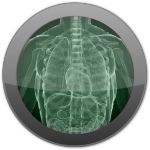Vascular Access

What You Need to Know
Many different types of catheters are used daily in healthcare with over 330 million short peripheral intravenous catheters (SPIVs) sold yearly and over 7 million central venous catheters (CVCs) sold each year
Catheter-related bloodstream infection (CRBSI) is a clinical term used for diagnostic/treatment purposes and includes infections from all types of catheters
Central line-associated bloodstream infection (CLABSI) is a surveillance term and includes only those infections pertaining to central venous catheters (CVCs) including nontunneled CVCs, tunneled CVCs, peripherally inserted central catheters (PICCs), and implanted ports.
Studies have shown that the average cost of care for a patient with a CRBSI is $45,000 and may place an additional annual burden of $2.3 billion on US healthcare
Most CRBSIs are preventable with adherence to proven intervention bundles
What You Need to Do
Carefully adhere to best evidenced based practice with respect to intervention components following industry accepted guidelines
Education and training must result in competency ensuring that appropriate standards are being followed and that polices and practice comport with those standards
Catheter risk must be managed at critical exposure points including catheter selection, site selection, insertion, maintenance, and responding to adverse events
Be aware of new guidelines which have changed the recommendations for catheter replacement/maintenance
Myths and Misconceptions
In 2008, Center for Medicare and Medicaid Services (CMS) began a policy of no longer providing reimbursement for vascular catheter-associated infections without modification for the type/location of catheter or bloodstream infection- TRUE
Peripheral venous catheters (PVCs) are the source of the largest number of bloodstream infections even though the incidence rate may be lower than central venous catheters- TRUE
Studies have shown that patient skin organisms account for the majority of CRBSIs which is why adherence to skin antisepsis during insertion is critical-TRUE
Adverse events pertaining to catheters often qualify as sentinel and/or serious safety events requiring reporting and root cause analysis -TRUE
Expert Services:
Healthcare
HAI Risk Management
- Emergency Response
- Outbreak Control
- Environmental Sampling
- Vector sampling (surfaces, water, air)
Remediation Oversight
- Environmental
- Bacterial/Viral/Fungal
Insurance Integration
- Integration of medical technologies/products with new insurance coverage opportunities
Insurance Toolkits
- Self-risk Evaluations
- Compliance Preparation
Education and Training
- Webinar and Seminars-New/Emerging Risk
- Risk and Liability Minimization
Healthcare Risk Alert Service
- Outbreak Information
- Recommendations for Insureds
- Risk and Liability Mitigation

